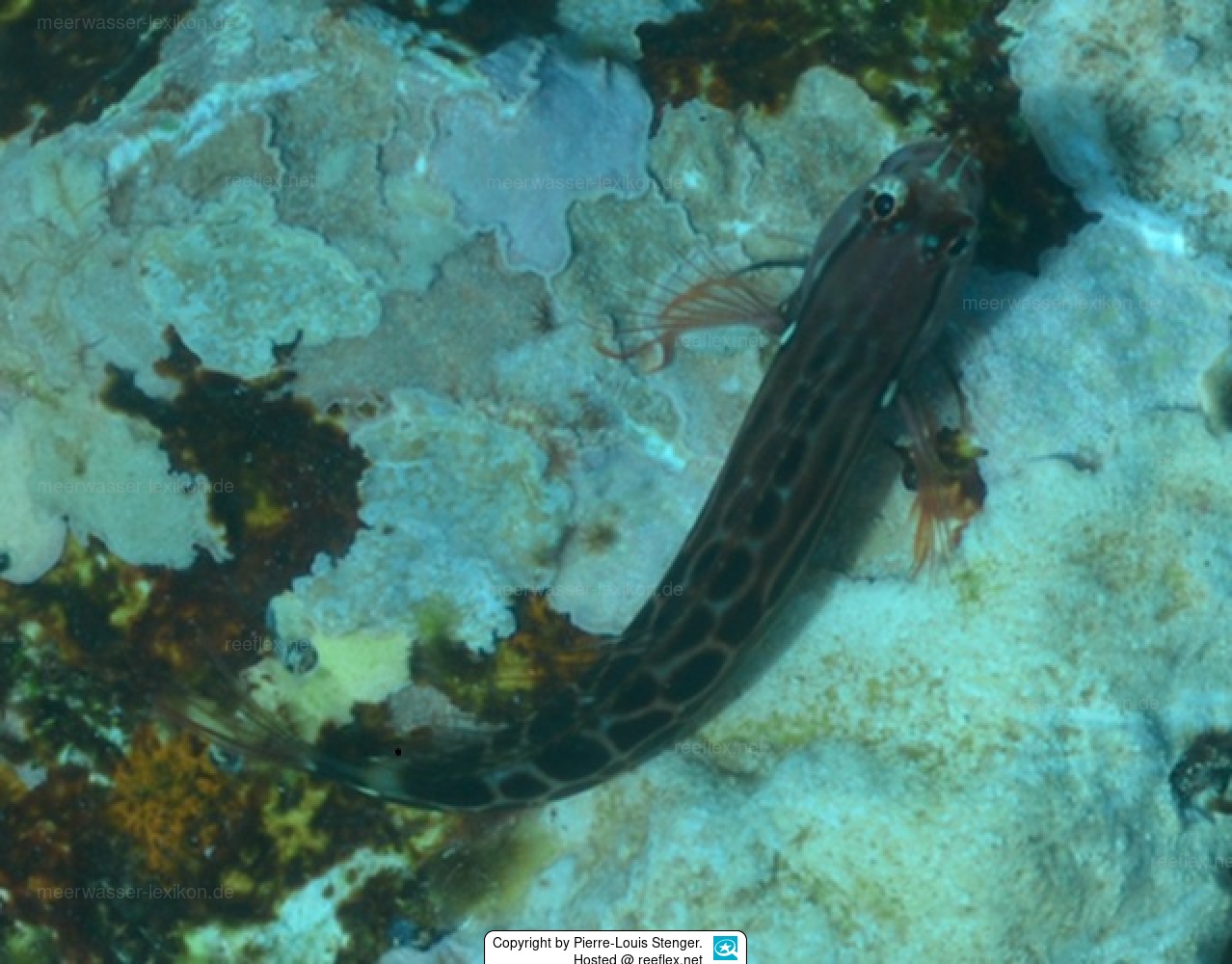Info
We would like to express our sincere thanks to Dr. Pierre-Louis Stenger, France, for permission to use his photograph taken in northern New Caledonia.
The adults of Ecsenius tessera inhabit coral reefs, from clear coastal waters to outer reef walls, usually where the current is moderate.
The eggs are demersal and sticky and are attached to the substrate via a filamentous, sticky cushion or base.
The larvae are planktonic and frequently occur in shallow coastal waters.
Brief description:
The dorsal, pectoral, and caudal fins of Ecsenius tessera are pink, and the anal fin has a broad orange-brown stripe.
A bright white spot is visible directly dorsal to the pectoral fin base, one or two at the base, one dorsal on the caudal peduncle, and one basal and central on the caudal fin.
The pelvic fins are mostly black with a white base and outer edge.
Etymology
The genus name “Ecsenius” comes either from the Greek “ekseio,” meaning “to shake off,” or from the Greek “exenios, -os, -on,” meaning “uncontrolled, excessive.”
The species name “tessera” comes from the Latin “tessera” = “small square piece” used to make a mosaic and refers to the tile-like appearance of the color pattern on the body of the blenny.
The adults of Ecsenius tessera inhabit coral reefs, from clear coastal waters to outer reef walls, usually where the current is moderate.
The eggs are demersal and sticky and are attached to the substrate via a filamentous, sticky cushion or base.
The larvae are planktonic and frequently occur in shallow coastal waters.
Brief description:
The dorsal, pectoral, and caudal fins of Ecsenius tessera are pink, and the anal fin has a broad orange-brown stripe.
A bright white spot is visible directly dorsal to the pectoral fin base, one or two at the base, one dorsal on the caudal peduncle, and one basal and central on the caudal fin.
The pelvic fins are mostly black with a white base and outer edge.
Etymology
The genus name “Ecsenius” comes either from the Greek “ekseio,” meaning “to shake off,” or from the Greek “exenios, -os, -on,” meaning “uncontrolled, excessive.”
The species name “tessera” comes from the Latin “tessera” = “small square piece” used to make a mosaic and refers to the tile-like appearance of the color pattern on the body of the blenny.







 Dr. Pierre-Louis Stenger, Frankreich
Dr. Pierre-Louis Stenger, Frankreich
























































